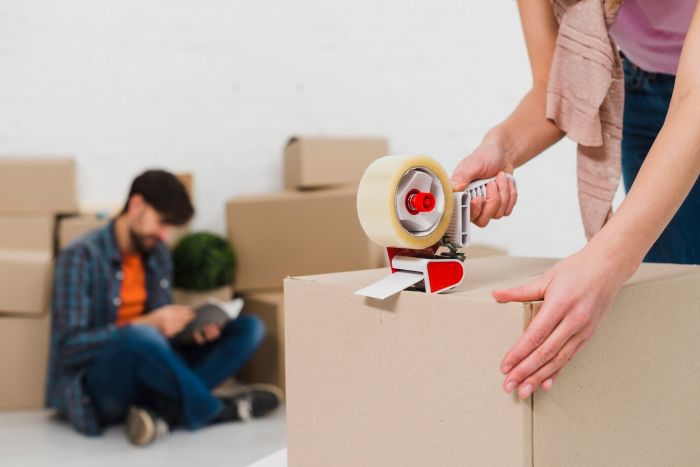Moving to a different house or workplace might be both stressful and exhilarating. Though the idea of beginning anew captures one’s imagination, properly packing and transporting things is a top worry. Nobody wants to reach their new destination only to realize missing treasures, broken furniture, or shattered glasses. You will be happy to know there are sensible and successful methods available to guarantee your possessions remain intact and safe for the length of the trip. Every choice—from selecting the right packing supplies to engaging trustworthy movers—turns less important. These are the simple and efficient techniques to protect your belongings during moving from a thorough perspective.
Plan ahead: a solution to moving without anxiety
Early planning is one of the most overlooked yet effective means of protecting your assets. Rushed packing usually results in missing delicate items, haphazard boxes, and general disorder. Begin your preparations several weeks before the real moving day. Make a list of your possessions, special handling instructions, and the order in which stuff should be boxed. This stage helps you identify any products that might need extra insurance cover or special handling as well as saves time.
Utilize first rate packing components
The basis of every secure move is the level of your packing goods. Sturdy boxes, bubble wrap, packing peanuts, and strong tape can greatly lower the chances of damage. Boxes that are poor or damaged can collapse, therefore jeopardizing your stuff. Artwork, dishware, and electronics should be in specialty boxes also. They are intended to provide more protection and padding for goods especially vulnerable to motion and shock.
With furnishings, think of stretch wrap or moving blankets. During shipping, these products assist in preventing dents, scratches, and other types of harm. For delicate objects, double wrap and softly pad them well inside the containers.
Label everything openly
Though small, proper labeling of your containers goes miles towards keeping order and guaranteeing security. Every box should clearly indicate its contents, the room it matches, and whether it has breakable things. Consider using color coded labels together with bold markers to help speed up the unpacking process even more.
Labels like “This Side Up” or “Handle with Care” enable movers to see how to handle the boxes to stop rough handling. If using a professional moving company, these labels are especially vital since they convey vital instructions without your ongoing admonition.
Disassemble Big Pieces of Furniture
Another way of stopping harm is to break apart big pieces such beds, desks, and closets. Wrapping and transporting little items securely is simpler than attempting to transport big ones. Store small hardware components, bolts, and screws in labeled plastic bags and tape them to the furniture items they match.
Take pictures while the disassembly is underway if you can. You will find these pictures quite useful as you reassemble furnishings at your next address.
Store important papers and valuables
Every last thing should not be put on the moving vehicle. One ought to personally transport sentimental heirlooms, laptops, vital documents (legal papers, medical records, passports), and jewelry. Keep these things in a safe, lockable container that you take with you.
Important documents might be stored in fireproof and waterproof file holders. These provide an extra level of security in case of unplanned events such as rain or accidental drops.
Prepare a first night essentials box
Though this does not actually shield goods from damage, packing a “first night” essentials box would spare you looking for basic kitchen utensils, clothing, or toiletries in many boxes. Among other items, this box should have a change of attire, snacks, toiletries, phone chargers, and medication.
Setting aside what you will need right away reduces the incentive to quickly open boxes and mishandle them, hence damaging your meticulously packed items.
Select the Appropriate Moving Firm
Do your research if you are hiring professional movers. Read critiques, check qualifications, and ask several quotes. Verify that the business is insured and licensed and inquire about their procedures for sensitive items. Dependable moving companies have experienced employees who know how to handle objects with little risk. For region-specific needs like Ohio Furniture Shipping, working with companies familiar with local routes and regulations can further enhance the safety and efficiency of your move.
If you’re using rented trucks for a DIY move, be sure you know how to safely store things inside the car. To keep furniture and boxes from movement in transit, tether them with ropes and ratchet straps.
Insurance: Better Safe Next Post is Hope
Even if you plan meticulously, mishaps still can occur. Moving insurance comes there. Although most moving firms provide standard coverage, it may fall short valuable or irreplaceable items. Think about buying more insurance, particularly for expensive items. Knowing that your belongings are insured gives tranquility during what can be a usually hectic period.
Avoid over packing boxes
Although it can be appealing to fill boxes to the brim to decrease the overall number of containers, over packing can cause problems. More difficult to move are heavier boxes and more likely to fall. Under pressure, they as well can rupture. Try to keep boxes under 50 pounds ideally. At the bottom, arrange the more heavy things; on top, set the more lightweight and delicate ones.
Things sensitive to temperature need unusual handling
If you are relocating in very harsh conditions, guard against things that could be damaged by temperature changes. Heat or cold can harm art, musical tools, candles, and electronics. If possible, schedule your move during cooler hours of the day and use thermal wraps or insulated containers.
Final room sweep and inventory check
Walk all over every room before you go from your previous house. Make sure nothing is left behind in drawers, cabinets, and closets. Crosscheck every item has been properly packed and accounted for using your inventory list.
Additionally, photograph your empty residence—particularly if you are renting. This information might assist you in negotiating cleanliness or damage disputes when getting your security deposit.
There is TOO much conflicting evidence out there on this subject as to reach a definitive judgment.
Moving need not means agony and damaged objects. By using a reliable moving company in combination with these simple but effective techniques—including early planning, use of excellent packing materials, clear labeling, furniture disassembly, protection of valuables, and dismantling— you can guarantee a seamless, damage free transition.
Whether you are relocating across the street or across the nation, protecting your stuff begins with organization and knowledge. You will get to your new location not only with your belongings but also with your mental state if you have the correct approach.




